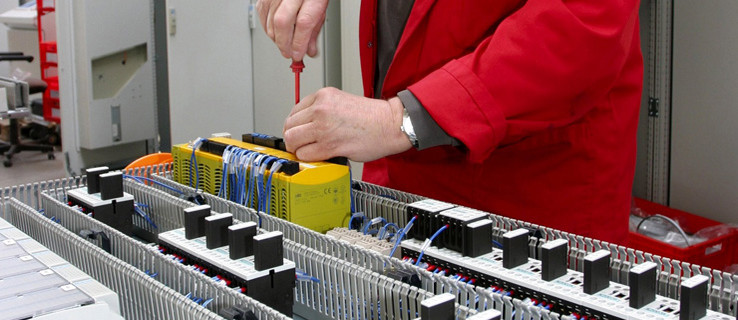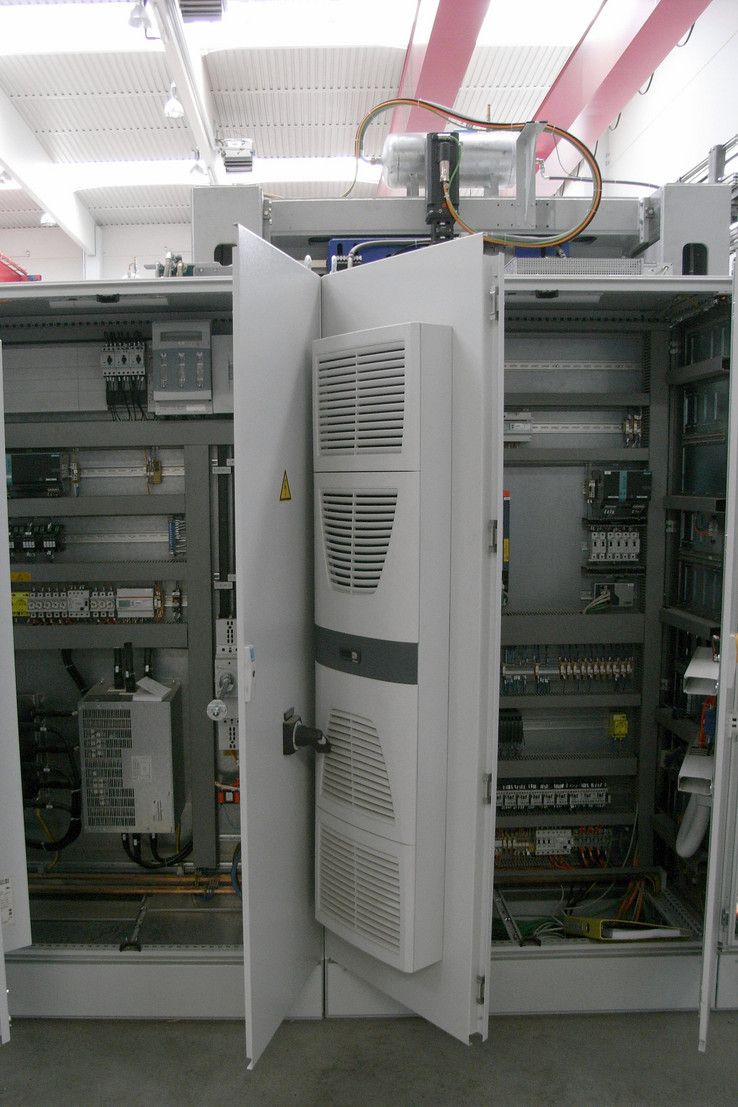EPLAN sped up development of special machinery production
In part Fill's efficiency and capability is achieved due to a company-wide PLM solution and also by using EPLAN Electric P8 and EPLAN Cabinet for electrical planning - fully integrated in a company-wide PLM solution.
Machine and plant manufacturer Fill, located in Upper Austria, is an innovative leader in solutions for complex production processes. This also includes the machining of aluminum cast parts for automobile engines. In part the company's efficiency and capability is achieved due to a company-wide PLM solution and also by using EPLAN Electric P9 and EPLAN Cabinet for electrical planning - fully integrated in a company-wide PLM solution. Founded in 1966, Fill Gesellschaft m.b.H. is a leading international idea factory for production systems in a wide variety of applications and industries and is characterized by its modern technology and methods in management, communication and production. Its operations encompass the automotive industry, aluminum foundry technology, the plastics industry, wood industry, ski and snowboard industry, metal machining and special machine production. The company is the world-wide market leader for ski and snowboard production machines and for aluminum core removal technology. The company, located in Gurten, Austria, has approximately 400 employees who generated around 50 million euro in 2007. Fill's managing directors, Andreas Fill and Wolfgang Rathner, like to describe their success in terms of percents: "The company is 100% family-owned, 100% of renowned ski producers rely on Fill and 80% of European automobiles drive with Fill technology." And Fill has dynamic growth. By 2012, Fill wants to increase the production area and number of employees by 50% and thereby increase revenue by 90%. The tickly task of casting core removal
The company maintains its role as an international trendsetter by continually introducing new innovations. In the automotive sector, especially for the production of aluminum castings, Fill offers a whole range of machines that cover the entire process chain, from casting itself to cooling, core removal, deburring, verification and finishing. An area in which Fill demonstrates leading international expertise is core removal. Parts created using lost molds in chill casting not only have the sand core removed; they are also machined in the follow-up sawing, drilling and milling operations. 17-axis NC machining is accomplished using a new control generation which, according to Fill, is a first in Europe. In addition to machines for chipping, the complex systems also have comprehensive handling equipment including a robot to pick up and pass on parts, wherever they may be located. The control system for the large, highly automated machines is correspondingly extensive. Together with the power supply, it fills a long battery of control cabinets. 10 years of EPLAN
The electrical part of the control technology is planned and designed using EPLAN Electric P8, and also EPLAN Cabinet, which is not surprising considering the number of control cabinets that are installed. Previously, another system was mainly used, however approximately 10 years ago, customer requirements made it necessary to also provide plans in EPLAN format. "Both systems still run in parallel today," says Wolfgang Rathner. "However, for approximately three years, we have been building up EPLAN and always use this system when the customer doesn't specify otherwise." Today, Fill has six EPLAN Electric P8 licenses and one EPLAN Cabinet license in use. The time factor is important. Electrical planning and automation are still brought in as the last section in the development process. Since there can be delays in the upstream areas, such as mechanical design, there usually isn't much time left for this important part of the work. "EPLAN Electric P8 is an important help in keeping within the tight time frames," says Wolfgang Rathner. "Due to the integrated, database structure, often components only have to be selected once." These are not only entered in the circuit diagram, but are also automatically taken into account in all other parts of the documentation. This saves time and at the same time increases the quality of the documentation since assignments and connections cannot be forgotten or mixed up. "That the extensive set of plans is output in a relatively easy-to-handle, dynamic PDF file with navigation options is a help during the implementation phase," adds Johann Lohner, electrical design manager. "It has a positive impact on the quality and speed of work of both in-house electrical installers and commissioning engineers on-site." In addition, terminal diagrams which are automatically generated from the circuit diagrams leave almost no opening for layout or placement errors. Collision control in EPLAN Cabinet
"EPLAN Cabinet also helps our engineers design quickly," continues Johann Lohner. "Especially in the automotive industry, device regulations are extremely detailed and extensive." There can be up to several hundred pages for electrical engineering alone. "It is good that not only the device geometries of the various makes are included in EPLAN Cabinet, but also that each manufacturer's specified minimum clearance is also taken into account in collision control." Also with respect to schematic implementation and to customer-specific deviations in the enclosure labeling, specifications only have to be made once and the rest is taken care of by intelligent EPLAN tools. Even though Fill tries to achieve a high level of standardization, the diversity of components due to varying customer specifications is much greater than in an operation which can restrict itself to just a few upstream suppliers. Another help for the electrical engineer is that EPLAN, as an internationally recognized market leader, cooperates closely with all renowned manufacturers which means that almost all components, assemblies and devices are available as product macros and can be easily used. Naturally, since even the enclosures are usually specified, it is an advantage that the current version of EPLAN Cabinet also lets you adapt your own accessories individually for different enclosure types. For the Rittal TS8 range of enclosures that are mainly used, all accessories such as cable routing spaces, top mounting modules, module panels and chassis are already integrated. Even the appropriate cooling solution, including the documentation, can be determined using Rittal Therm and the cooling device with all necessary drilling information can be placed in EPLAN Cabinet. Direct transfer of drilling information
Since EPLAN Cabinet was introduced, at the beginning of 2008, Fill generally transfers all drilling information for mounting panels and enclosure housing online to the CNC machines. This also accelerates the transition to production and improves the quality and fitting accuracy so that today rework is a thing of the past. "From my point of view, the most outstanding feature of EPLAN software is that it fully supports our top down design philosophy," says Rathner. "Electrical design is based on functionality irrespective of the actual installation situation; individual parts for the electrical installation are assigned to the individual enclosure units afterwards. This also ensures an optimized, rational result." In general, the innovative mechanical engineering company sees itself as a forerunner of its branch in more than one respect. For instance, Fill has integrated all technical software products, even EPLAN Electric P8 and EPLAN Cabinet, into a single integrated PLM environment. Due to the open interface database construction, this integration could be implemented with little effort, so that electrical design is brought closer to all other development areas and Fill is one step closer to its target of parallel development for faster project implementation.





